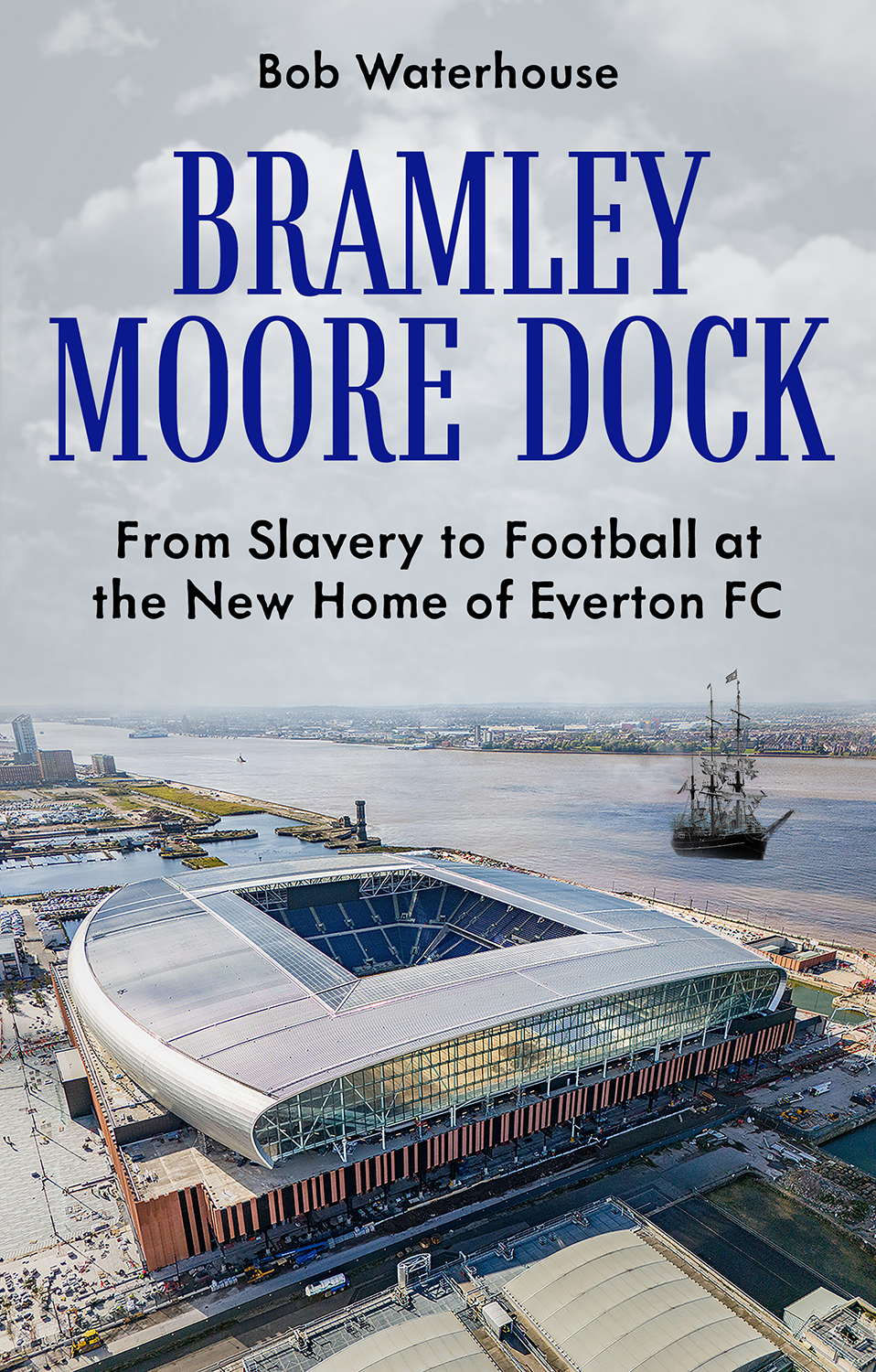A new book tracing the shady past of the site of Everton’s new ground is reviewed by Eric Brown...

BY ERIC BROWN
Everton are ready to unveil the Premier League’s latest new ground on a site stained by unsavoury links with slavery.
That the Bramley Moore dock in a rundown, neglected area of Liverpool has connections to the slave trade is well known, but a new book delves deep into the dock’s history and reveals some of the characters who built fortunes through their connections to slavery.
Author Bob Waterhouse identifies some of the Liverpool businessmen involved with what was once a widely accepted industry.
Some of the greatest world trade lay in cotton, sugar and coffee. To produce any of these in financially viable quantities, a large workforce was required in far-off lands, hence the formation of slave gangs.
John Bramley-Moore was born in Leeds in 1800, spending time as a merchant in South America before marrying Seraphina Hibernia Pennell, daughter of the British consul general for Brazil, where he had lived since 1820.
John Moore, as he was then known, set up an import-export business and added the name Bramley to enhance low-born status and seal his marriage.
Slavery, banned in England in 1807, was still flourishing in Brazil and in the 1820s, some 500,000 slaves were trafficked there by slave traders.
Bramley-Moore made full use of this forced labour, especially on his estate a few miles from Rio which contained 5,000 coffee bushes.
When slavery was outlawed in Brazil by 1831, Bramley-Moore continued to use slaves illegally. The arrangements suited not only Bramley-Moore but many others based in Liverpool, one of the world’s greatest and most active ports and Great Britain’s largest slave port.
By 1835, Bramley-Moore was back in Liverpool and by 1841 was a member of the town council and dock committee.
He suggested dock expansion, the new dock adopted his name, and it opened in 1848, with Bramley-Moore now starting to distance himself from the trade which made many Liverpool businessmen wealthy.
Waterhouse discusses the possibility that Bramley-Moore’s connection with the slave trade may have been subsequently hidden to some extent by city glitterati no longer proud of Liverpool’s source of wealth.
Many years later, Everton moved promptly to obscure the name of the dock founder from their new home, replacing it with that of a financial backer before they had kicked a ball in it.
Much of this book is concerned only with Liverpool’s rich history, its trade and merchants and the possible regeneration of a poor city area.
For Everton fans and football historians, the early narrative of the tortuous route the club followed to arrive in their fabulous, state-of-the-art 52,000-capacity home beside the Mersey will be most appealing.

This includes Everton’s narrow escape from falling into the hands of American group 777. The club at first regarded the company as saviours after several false starts at finding a buyer for Farshad Moshiri’s controlling interest, required to progress the new ground project.
But thanks mainly to campaigning website Josimar, 777 were exposed as a company with liabilities at many of their European football clubs and a collapsed airline.
It seemed 777 needed Everton to establish their credibility more than Everton needed 777. How the situation was resolved forms much of the early part of Mr Waterhouse’s tale.
Bramley Moore Dock by Bob Waterhouse is published by Pitch Publishing, price £14.99
The SJA is interested in your sports media industry news and views. Keen to reach an engaged audience, including over 70,000 followers across social media? We welcome your enquiries – contact us here. We also offer advertising and sponsorship opportunities.
For information on how to apply as a Full or Associate Member of the SJA, plus details of our free-to-enter SJA Academy, click here.